The 1926 Buffalo Nickel’s value ranges from $1.25 to over $115,000 depending on mint mark and condition. Common 1926 nickels (no mint mark) are worth $1.25-$3 in good condition, up to $100+ uncirculated. The 1926-D (Denver) is more valuable at $10-$185. The rare 1926-S (San Francisco) is a key date coin, worth $22 in good condition, $500+ in very fine, and up to $115,000 for exceptional specimens. Value factors include mint mark (S being most valuable), condition grade, strike quality (especially buffalo horn details), and professional grading certification from PCGS or NGC for authenticity assurance.
That worn Buffalo nickel sitting in your collection might be worth significantly more than five cents. The 1926 Buffalo nickel represents one of the most interesting years in this iconic series, particularly because of dramatic value differences between mint locations. While Philadelphia-minted examples remain relatively common, the San Francisco version commands premiums that can reach into six figures for pristine specimens. Understanding exactly what you have requires knowing where to look and what separates a three-dollar coin from a thousand-dollar treasure.
Identifying Your 1926 Buffalo Nickel Mint Mark
Before determining value, you need to identify which variety you own. The mint mark appears on the reverse (tails side) beneath the denomination “FIVE CENTS,” located between the buffalo’s back legs and slightly above the ground line. This tiny letter makes an enormous difference in value.
The Philadelphia Mint produced 44,693,000 Buffalo nickels in 1926 with no mint mark. Denver struck 5,638,000 pieces marked with a “D,” while San Francisco created only 970,000 coins bearing the “S” mint mark. This low mintage makes the 1926-S immediately valuable, even in heavily circulated condition.
Many collectors miss the mint mark entirely because of wear. On circulated examples, the area beneath the buffalo often shows significant smoothing. Use a magnifying glass and good lighting positioned at an angle to catch any remaining traces of the letter. If you see absolutely nothing and the coin shows moderate to heavy wear, you likely have a Philadelphia example rather than a worn San Francisco piece.
1926 Buffalo Nickel Value by Mint Mark and Grade
Philadelphia (No Mint Mark) Values
The standard 1926 Buffalo nickel without a mint mark represents the most affordable entry point into this date:
| Grade | Value Range |
|---|---|
| Good (G-4) | $1.25 – $2.50 |
| Fine (F-12) | $4.00 – $8.00 |
| Very Fine (VF-20) | $10.00 – $18.00 |
| Extremely Fine (EF-40) | $35.00 – $55.00 |
| About Uncirculated (AU-50) | $65.00 – $95.00 |
| Mint State (MS-60) | $110.00 – $150.00 |
| MS-65 | $375.00 – $550.00 |
According to PCGS CoinFacts, MS-65 examples consistently sell between $400 and $500 at major auctions, while MS-66 specimens reach $1,200 to $1,800. The record for a 1926 Philadelphia Buffalo nickel stands at $14,400 for an MS-67 example sold through Heritage Auctions in 2019.
Denver Mint (1926-D) Values
The Denver issue carries a moderate premium over Philadelphia pieces:
| Grade | Value Range |
|---|---|
| Good (G-4) | $3.00 – $6.00 |
| Fine (F-12) | $12.00 – $20.00 |
| Very Fine (VF-20) | $28.00 – $45.00 |
| Extremely Fine (EF-40) | $85.00 – $140.00 |
| About Uncirculated (AU-50) | $165.00 – $235.00 |
| Mint State (MS-60) | $285.00 – $425.00 |
| MS-65 | $1,100.00 – $1,650.00 |
The 1926-D generally comes well-struck with strong details on the buffalo’s head and the Native American’s features. This characteristic makes higher grades more accessible compared to some other Denver issues from the mid-1920s.
San Francisco Mint (1926-S) Values
The key date of 1926, the San Francisco issue commands substantial premiums:
| Grade | Value Range |
|---|---|
| Good (G-4) | $18.00 – $28.00 |
| Fine (F-12) | $85.00 – $135.00 |
| Very Fine (VF-20) | $225.00 – $375.00 |
| Extremely Fine (EF-40) | $500.00 – $750.00 |
| About Uncirculated (AU-50) | $900.00 – $1,400.00 |
| Mint State (MS-60) | $2,200.00 – $3,500.00 |
| MS-65 | $18,000.00 – $28,000.00 |
Heritage Auctions sold an MS-67 1926-S for $115,000 in January 2023, establishing the current record for this issue. Even heavily worn examples retain significant value—a Good-4 specimen representing nearly four times the worth of a similar Philadelphia piece.
The 1926-S typically shows weaker strikes than other mints, particularly on the buffalo’s head and the Native American’s cheekbone. Full horn definition and strong feather details dramatically increase value within the same numerical grade.
Recognizing Valuable 1926 Buffalo Nickel Errors
Double Die Obverse
Several 1926 Philadelphia nickels exhibit doubling on “LIBERTY” and the date. This error appears as a slight shadow or separation of letters when viewed under magnification. Strong examples showing clear doubling throughout the word “LIBERTY” sell for $150 to $400 in Fine condition, with Mint State specimens reaching $1,200 to $2,000.
The doubling occurs most prominently on the lower portion of letters, creating a distinctive appearance different from simple strike doubling or machine damage. Compare your coin to known examples on PCGS or NGC certification holders before assuming you have this variety.
Repunched Mint Marks
The 1926-D shows several repunched mint mark varieties where the “D” was stamped multiple times in slightly different positions. Look for traces of the letter appearing to the left, right, or beneath the primary mint mark. Values range from $25 to $75 for circulated examples depending on the strength and clarity of the repunching.
Die Cracks and Cuds
Late die state 1926 Philadelphia nickels sometimes display raised lines (die cracks) across the surface or raised blobs of metal (cuds) at the rim where the die broke completely. A prominent cud covering significant design elements adds $35 to $150 to standard values depending on size and location.
Off-Center Strikes
Buffalo nickels struck off-center with the date still visible carry premiums. A 1926 nickel showing 10% off-center positioning sells for $75 to $200, while 20-30% off-center examples with full dates reach $250 to $600. Pieces missing the date lose most of their collectible premium.
Critical Factors Affecting 1926 Buffalo Nickel Value
Strike quality separates similarly graded coins by hundreds of dollars. The buffalo’s horn represents the highest point on the reverse design and wore down quickly in circulation. Even on Mint State coins, weak strikes from worn dies resulted in incomplete horn definition. A 1926-S graded MS-64 with a full, sharp horn sells for 40-60% more than a weakly struck example in the same holder.
The obverse high point appears on the Native American’s cheekbone. Check this area for completeness of detail and absence of flat spots. Full Heads designations from PCGS or NGC require complete hair braid definition and facial contours, commanding significant premiums.
Surface preservation matters enormously. Buffalo nickels cleaned with abrasive methods show hairline scratches under magnification and sell for 30-50% less than properly preserved examples. Dark, crusty environmental damage similarly reduces value. Original mint luster—the cartwheel effect visible when rotating the coin under a light—adds substantial premiums to uncirculated pieces.
Toning patterns affect desirability. Light golden or iridescent toning often increases value for collector appeal, while dark brown or black toning typically reduces it. The numismatic market particularly values original skin coins showing natural aging without cleaning or artificial enhancement.
Authentication and Professional Grading Considerations
For any 1926-S Buffalo nickel or 1926-D/1926 Philadelphia piece appearing to grade Extremely Fine or better, professional certification through PCGS or NGC provides authentication and protects your investment. Certification costs $20 to $40 for standard service levels but adds credibility and often increases selling price by more than the grading fee.
Counterfeit 1926-S nickels exist because of the variety’s value. Reproductions typically show the wrong font style for the mint mark or appear in the wrong location. Compare the size, shape, and position of the “S” to certified authentic examples. The letter should appear small, slightly oval, and positioned precisely centered beneath “FIVE CENTS.”
Added mint marks represent another authentication concern. Unscrupulous individuals sometimes add an “S” or “D” to common Philadelphia nickels using punches or engraving tools. These additions show differences in depth, style, or position compared to genuine mint marks. Under magnification, you can often see disturbance to the metal surface surrounding fraudulent marks.
Weight verification provides a simple authentication test. Genuine Buffalo nickels weigh 5.0 grams with a tolerance of plus or minus 0.1 grams. Significant deviations suggest counterfeits, though worn coins may fall slightly below this range.
Maximizing Value When Selling Your 1926 Buffalo Nickel
Your selling strategy should match your coin’s value tier. Common circulated Philadelphia and Denver examples worth under $50 sell efficiently through local coin shops, though expect offers at 60-80% of retail prices listed in guides. These dealers need profit margin and face overhead costs.
Mid-range pieces valued between $50 and $500 often perform better through online marketplaces like eBay, where you reach national audiences. Include clear photographs showing both sides, close-ups of the mint mark area, and any notable features. Accurate descriptions prevent returns and build buyer confidence.
High-value 1926-S nickels, certified Mint State examples, or significant error coins merit consignment to major auction houses like Heritage, Stack’s Bowers, or Great Collections. These venues charge 10-20% seller fees but connect your coin with serious collectors willing to pay full market value. Auction results for similar pieces provide realistic price expectations.
Timing matters for maximum returns. The coin market experiences seasonal patterns, with major shows in January and August generating increased buyer activity. Year-end sales sometimes see reduced participation as collectors exhaust annual budgets.
Building a Complete 1926 Buffalo Nickel Set
Collectors pursuing complete date and mint mark sets find 1926 particularly challenging because of the 1926-S key date. Budget-conscious approaches start with a Good to Very Good 1926-S example, then upgrade other varieties to higher grades. This strategy creates a complete set while managing the significant expense of premium-grade San Francisco pieces.
Album storage prevents damage and organizes your collection. Whitman folders provide affordable storage, while premium albums from Dansco or Library of American Coins offer superior protection. Never store Buffalo nickels in polyvinyl chloride (PVC) holders, which cause green corrosion damage over time.
Registry set collecting through PCGS or NGC allows competition with other collectors worldwide. These services rank sets by overall grade and completion percentage, adding a competitive element to the hobby. The finest 1926 Buffalo nickel set currently registered scores 66.7 average grade across all three mint marks.
Smart Purchasing Strategies for 1926 Buffalo Nickels
Buy the highest grade you can afford for the 1926-S, as this variety appreciates most consistently over time. Conversely, mid-grade examples of the Philadelphia and Denver issues offer better value than premium Mint State pieces, which carry disproportionate premiums.
Original roll opportunities occasionally appear at estate sales and auctions. A genuine original roll of 1926 Philadelphia nickels contains 40 coins and sells for $180 to $400 depending on overall grade distribution. Denver rolls range from $450 to $900, while 1926-S rolls essentially never appear because of the low original mintage.
Watch for undergraded pieces at coin shows and smaller auctions. A 1926-S technically grading VF-35 but priced as VF-20 because of conservative seller assessment represents genuine value. Knowledge of grading standards and variety characteristics helps identify these opportunities.
Avoid common mistakes like overgrading your own coins, paying retail for common circulated examples available at wholesale prices, or buying problem coins with cleaning, damage, or alteration hoping to “upgrade” them later. These rarely represent good value.
Where Your 1926 Buffalo Nickel Journey Leads
Understanding your 1926 Buffalo nickel’s true value starts with accurate identification of the mint mark, honest assessment of condition, and recognition of any errors or varieties. The substantial spread between a common Philadelphia piece and a rare San Francisco example makes proper attribution essential before determining your next steps—whether selling for maximum return or completing a collection that spans this fascinating series.
You may be interested:
- 1859 Indian Head Penny Coin Value Complete Errors List And No Mint Mark Worth Guide For Collectors
- 1911 V Nickel Coin Value Guide Complete Errors List And No Mint Mark Worth Today
- 1902 Dime Coin Value Complete Errors List With O S And No Mint Mark Worth Guide
- 1788 Quarter Coin Value Complete Guide Errors List And D S P Mint Mark Worth Revealed
- 1776 To 1976 Bicentennial Half Dollar Coin Value Complete Errors List And What Your D S And No Mint Mark Coins Are Actually Worth
- 1990 Penny Coin Value Errors List How D S And No Mint Mark Pennies Are Worth Thousands Of Dollars

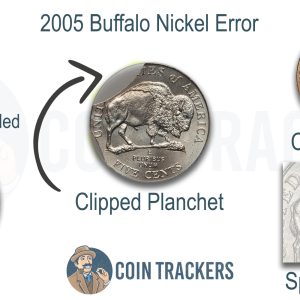
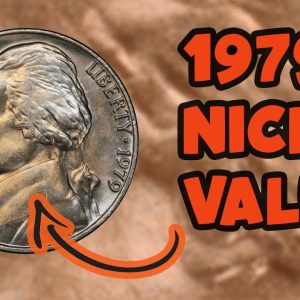
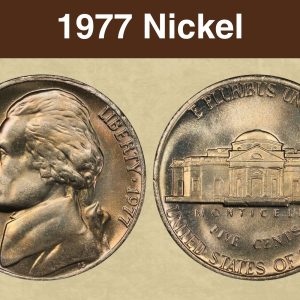
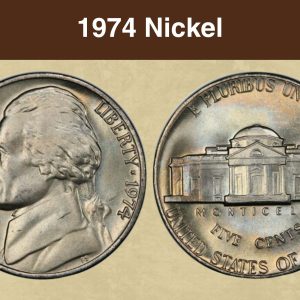
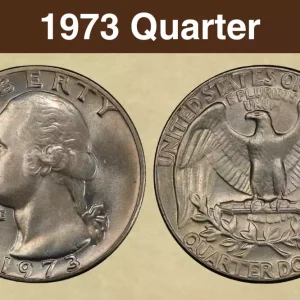
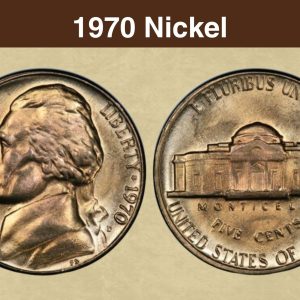
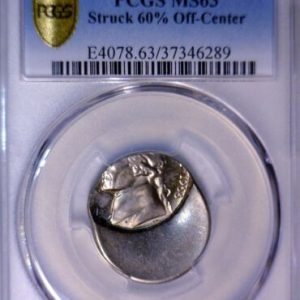
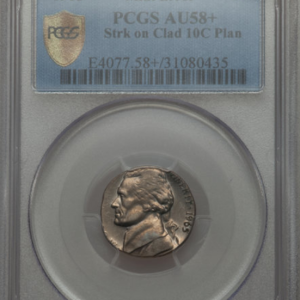
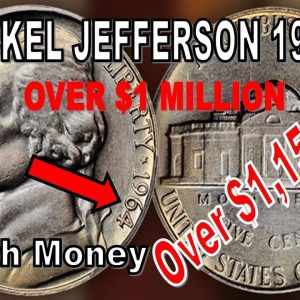
Is a 1926 Buffalo Nickel worth anything?
Yes, a 1926 Buffalo nickel is worth something, but its value varies significantly based on its condition and whether it has a “S” mint mark from the San Francisco mint. Common 1926 nickels (no mint mark or “D” mint) in average circulated condition are worth around $ 3 $ 3 $ 3 to $ 10 $ 10 $ 1 0, while the rarer 1926-S version is much more valuable, potentially selling for hundreds or even thousands of dollars depending on its grade.
What are the errors on Buffalo nickels?
Common errors on Buffalo nickels include the famous “Three-Legged” nickel, where a leg is missing from the buffalo due to a die polishing error in 1937. Other errors include a “Two Feathers” variety from die polishing, a “Speared Bison” error on 2005 nickels caused by a die gouge, and various off-center strikes, die breaks, and lamination errors. These errors are often caused by a combination of the coin’s high-relief design leading to die wear and human error in the minting process.
Where is the mint mark on a 1926 Indian head nickel?
Location: On the reverse side, beneath the words “FIVE CENTS”. No mint mark: The coin was minted in Philadelphia. “D”: The coin was minted in Denver. “S”: The coin was minted in San Francisco.
What Buffalo head nickels are worth money?
Buffalo nickels that are worth money include key dates like the 1913-S Type 2, 1921-S, 1924-S, 1926-S, and 1937-D “three-legged” version, as well as coins with major mint errors like doubled dies or being struck on the wrong planchet. The value of these rare coins is highly dependent on their condition, with some in high-grade condition selling for thousands or even hundreds of thousands of dollars.